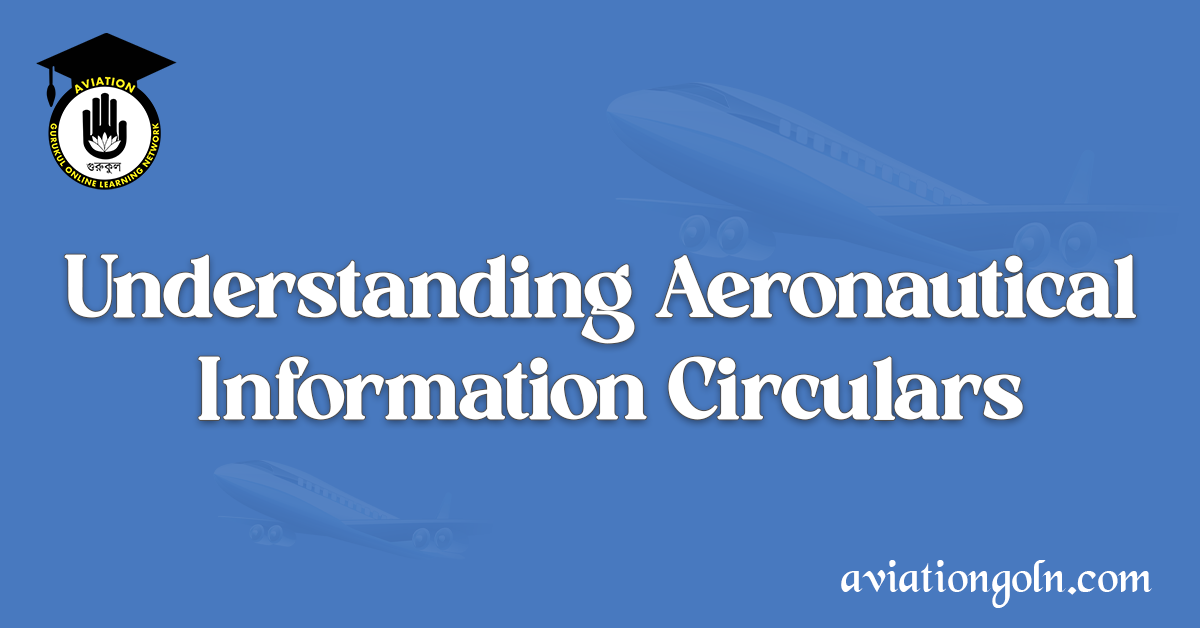When navigating the dynamic world of aviation, pilots, air traffic controllers, and other key personnel must rely on a wealth of information that is timely, accurate, and comprehensive. Among the myriad of sources available, Aeronautical Information Circulars (AICs) and aeronautical charts hold pivotal importance. This guide seeks to provide an in-depth understanding of these two essential tools and their role in ensuring safe and efficient flight operations.
Understanding Aeronautical Information Circulars: Aeronautical Information Circulars and Charts
1. Introduction to Aeronautical Information Circulars (AICs)
Aeronautical Information Circulars (AICs) are non-regulatory, informational documents published by aviation authorities. Their primary purpose is to inform aviation stakeholders about significant, time-sensitive matters which, while not regulatory, are essential for safety, regularity, and efficiency of air navigation.
1.1. The Need for AICs
In the ever-evolving landscape of aviation, there is a continual stream of changes, from advancements in technology and equipment to shifts in procedures. AICs offer a platform for aviation authorities to disseminate this information in an organized, standardized manner.
1.2. Content of AICs
Typically, AICs might cover topics such as:
- Temporary changes to air navigation services or facilities.
- Forewarning of changes in legislation or procedures.
- Information on international aviation events or exercises.
- Guidance on operational practices.
- Safety and operational data.

2. Differentiating Between AICs and Other Regulatory Documents
AICs are unique in their non-regulatory status. Unlike Airworthiness Directives or Notices to Airmen (NOTAMs), AICs do not direct or require specific actions. Instead, they serve an advisory purpose, providing context and clarity on various aviation-related subjects.

3. Aeronautical Charts: Mapping the Skies
To complement the textual information of AICs, aeronautical charts visually represent vital data for pilots. These charts provide graphical depictions of airspace, airways, navigational aids, airports, and topographical features.
3.1. Types of Aeronautical Charts
There are several types of charts available, tailored to different phases of flight and types of operations:
- VFR (Visual Flight Rules) Charts: Used by pilots flying under visual flight conditions. They depict airspace, terrain, and visual landmarks.
- IFR Enroute Charts: Used by pilots flying under instrument flight rules between airports. These detail high and low altitude airways, navigational aids, and pertinent airspace boundaries.
- Terminal Procedure Charts: Used for the approach, landing, and departure phases of flight under IFR conditions. They provide critical data such as approach procedures, runways, and missed approach instructions.

3.2. Interpreting Aeronautical Charts
For those unfamiliar with them, aeronautical charts can appear overwhelmingly complex. However, they are structured to provide maximum clarity and utility for pilots:
- Legend: Every chart includes a legend detailing symbols, line styles, and colors used.
- Scale: Charts vary in scale depending on their intended use. For instance, an IFR enroute chart covers a larger area with less detail than a terminal procedure chart.
- Airspace Boundaries: Charts define airspace sectors, their vertical limits, and classification.
- Navigational Aids: Radios, waypoints, and beacons are depicted for pilot reference.

4. The Symbiotic Relationship of AICs and Aeronautical Charts
AICs and charts often work hand-in-hand. For instance, an AIC might announce a temporary procedure due to construction at an airport. While the AIC describes the change, the updated aeronautical chart would visually represent it, ensuring that pilots can both understand and see the information.

5. Accessing and Updating AICs and Charts
With the digital age, paper charts and printed AICs are becoming less common. Most aviation authorities now offer these resources online, ensuring that users can access the most current, up-to-date information. Many modern cockpit systems also integrate digital charting solutions, allowing pilots to overlay charts with real-time flight data.

AICs and aeronautical charts represent two sides of the same coin. One provides detailed textual information on noteworthy changes and updates, while the other offers a visual representation of the airspace and its components. Together, they form the backbone of a pilot’s informational arsenal, ensuring that those who navigate our skies have the knowledge they need to do so safely and efficiently.
In the fast-paced world of aviation, where changes can occur overnight, it’s crucial to have reliable sources of information. By understanding and staying current with AICs and charts, aviation professionals safeguard themselves, their passengers, and the entire aviation ecosystem.
